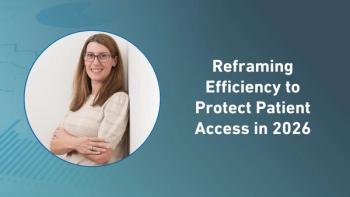
Inside the GLP-1 Strategy Driving Competitive Edge in Obesity Clinical Research
Shipra Patel, global therapeutic area section head, endocrinology, global head, pediatrics, Parexel, explains how a focused GLP-1 task force and deep market insights are helping sponsors stand out in an increasingly competitive obesity drug landscape
In an interview with Applied Clinical Trials, Shipra Patel, global therapeutic area section head for endocrinology and global head of pediatrics at Parexel, discussed the evolving landscape of obesity drug development and what it takes to stand out in a field crowded with more than 90 active sponsors. Patel emphasized the importance of therapeutic depth, cross-functional collaboration, and the strategic use of real-world evidence to design safer, more effective clinical trials—particularly as GLP-1 therapies expand into new indications such as Alzheimer’s, addiction, and MASH. She also shared how Parexel is adapting its clinical infrastructure to meet the growing complexity of this space, while keeping long-term patient engagement and global data integrity at the forefront.
ACT: With more than 90 sponsors currently driving obesity drug trials, what differentiates an “all-star” clinical research partner in this highly competitive and crowded pipeline?
Patel: I think the first step is really understanding the complexity and competitiveness of the market. It’s essential to have a strong pulse on market trends and a clear view of how the landscape is evolving. That includes having leadership that’s not only knowledgeable about GLP-1s but also understands their role across multiple indications — not just obesity and diabetes, but also MASH, Alzheimer’s, Parkinson’s disease, sleep apnea, addiction, and more.
At Parexel, for example, we’ve established a dedicated GLP-1 task force — a team of experts focused on this space who help clients navigate the landscape and improve their competitiveness. Having that kind of specialized support is what really sets apart a high-performing clinical research partner in such a dynamic and crowded field.
Full Interview Summary: With more than 90 sponsors now driving obesity drug trials, standing out in this competitive space requires deep therapeutic expertise and cross-functional coordination. According to leaders at Parexel, the key differentiator for a standout research partner lies in a nuanced understanding of the evolving obesity drug market—particularly GLP-1 therapies. These compounds, initially developed for diabetes and obesity, are now being investigated for a broad range of indications including MASH, Alzheimer’s, addiction, Parkinson’s, and sleep apnea. To support this complexity, Parexel has implemented a GLP-1 task force—an internal expert group that helps clients stay competitive across the drug development lifecycle.
To handle GLP-1 trials spanning multiple therapeutic areas, Parexel relies on a therapeutically aligned model, connecting area leads across endocrinology, cardiology, psychiatry, and pulmonology. These cross-disciplinary teams collaborate to translate clinical trial learnings between indications and optimize study designs for similar mechanisms of action.
Real-world evidence (RWE) plays a central role in addressing the safety concerns linked to rising off-label GLP-1 use, even among patients with normal BMI. RWE shows many patients discontinue treatment early, often due to costs or tolerability issues—particularly gastrointestinal side effects. Flexible dosing, even below the maximum level, may still yield metabolic benefits, offering a new lens for trial design.
Parexel has leveraged RWE to identify non-traditional patient populations and refine trial protocols—for instance, by pinpointing regions with high use of GLP-1s to aid recruitment for switch-over studies. Looking ahead to 2050, long-term patient retention, better compliance tracking, and global data accuracy will be essential to compare therapies and identify long-term leaders in the obesity space. Innovations in AI and global patient engagement will be critical in sustaining participation and capturing meaningful safety outcomes.
Newsletter
Stay current in clinical research with Applied Clinical Trials, providing expert insights, regulatory updates, and practical strategies for successful clinical trial design and execution.




